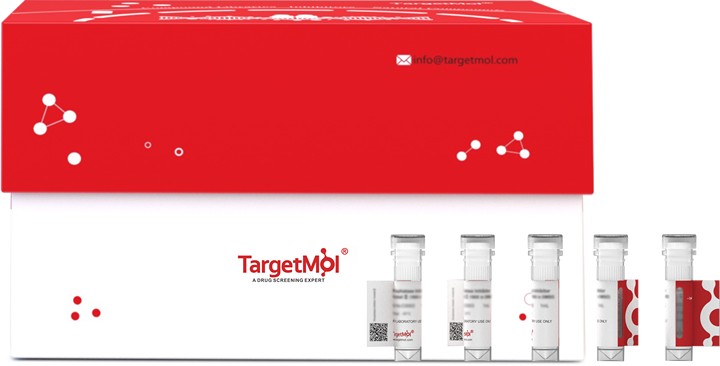购物车
全部删除  您的购物车当前为空
您的购物车当前为空
4-1BB/CD137/TNFRSF9 Protein, Human, Recombinant (CHO, hFc) is expressed in CHO Cells. The accession number is Q07011.

| 规格 | 价格 | 库存 | 数量 |
|---|---|---|---|
| 5 μg | ¥ 412 | 6-8日内发货 | |
| 10 μg | ¥ 665 | 6-8日内发货 | |
| 20 μg | ¥ 1,090 | 5日内发货 | |
| 50 μg | ¥ 2,160 | 5日内发货 | |
| 100 μg | ¥ 3,660 | 5日内发货 | |
| 200 μg | ¥ 6,230 | 5日内发货 | |
| 500 μg | ¥ 12,600 | 5日内发货 | |
| 1 mg | ¥ 21,600 | 5日内发货 |
| 生物活性 | Measured by its binding ability in a ligand-receptor binding ELISA. When recombinant 4-1BB/CD137/TNFRSF9, hFc, Human is Immobilized at 1.0 µg/ml (100 µl/well), the concentration of recombinant human 4-1BB Ligand that produces 50% optimal binding response is found to be approximately 5.0-15.0 ng/ml. |
| 产品描述 | 4-1BB/CD137/TNFRSF9 Protein, Human, Recombinant (CHO, hFc) is expressed in CHO Cells. The accession number is Q07011. |
| 种属 | Human |
| 表达系统 | CHO Cells |
| 标签 | hFc |
| 蛋白编号 | Q07011 |
| 别名 | TNFRSF9,T-cell antigen ILA,CD137 antigen,4-1BB |
| 蛋白构建 | Leu24-Gln186 |
| 蛋白纯度 | > 95% as determined by SDS-PAGE |
| 分子量 | 55~60 kDa (Reducing conditions) |
| 内毒素 | < 0.2 EU/μg of protein as determined by the LAL method. |
| 缓冲液 | Lyophilized from a 0.2 μm filtered solution in PBS. |
| 复溶方法 | Reconstitute the lyophilized protein in sterile deionized water. The product concentration should not be less than 100 μg/ml. Before opening, centrifuge the tube to collect powder at the bottom. After adding the reconstitution buffer, avoid vortexing or pipetting for mixing. |
| 存储 | Upon receiving, this product remains stable for up to 6 months at lower than -70°C. Upon reconstitution, the product should be stable for up to 1 week at 4°C or up to 3 months at -20°C. For long term storage it is recommended that a carrier protein (example 0.1% BSA) be added. Avoid repeated freeze-thaw cycles. |
| 运输方式 | In general, Lyophilized powders are shipping with blue ice. Solutions are shipping with dry ice. |
| 研究背景 | 4-1BB(CD137) is a member of the tumor necrosis factor (TNF) receptor family. Mature human 4-1BB consists of a 163 amino acid extracellular domain (ECD) with four TNFR cysteine‑rich repeats, a 27 aa transmembrane segment, and a 42 aa cytoplasmic domain; 4-1BB (CD137) is expressed as a disulfide-linked homodimer on various populations of activated T cell including CD4 + , CD8 + , memory CD8 + , NKT, and regulatory T cells as well as on myeloid and mast cell progenitors, dendritic cells, mast cells, and bacterially infected osteoblasts. It binds with high affinity to the transmembrane 4-1BB Ligand/TNFSF9 which is expressed on antigen presenting cells and myeloid progenitor cells. This interaction co stimulates the proliferation, activation, and/or survival of the 4-1BB expressing cell. It can also enhance the activation-induced cell death of repetitively stimulated T cells. |